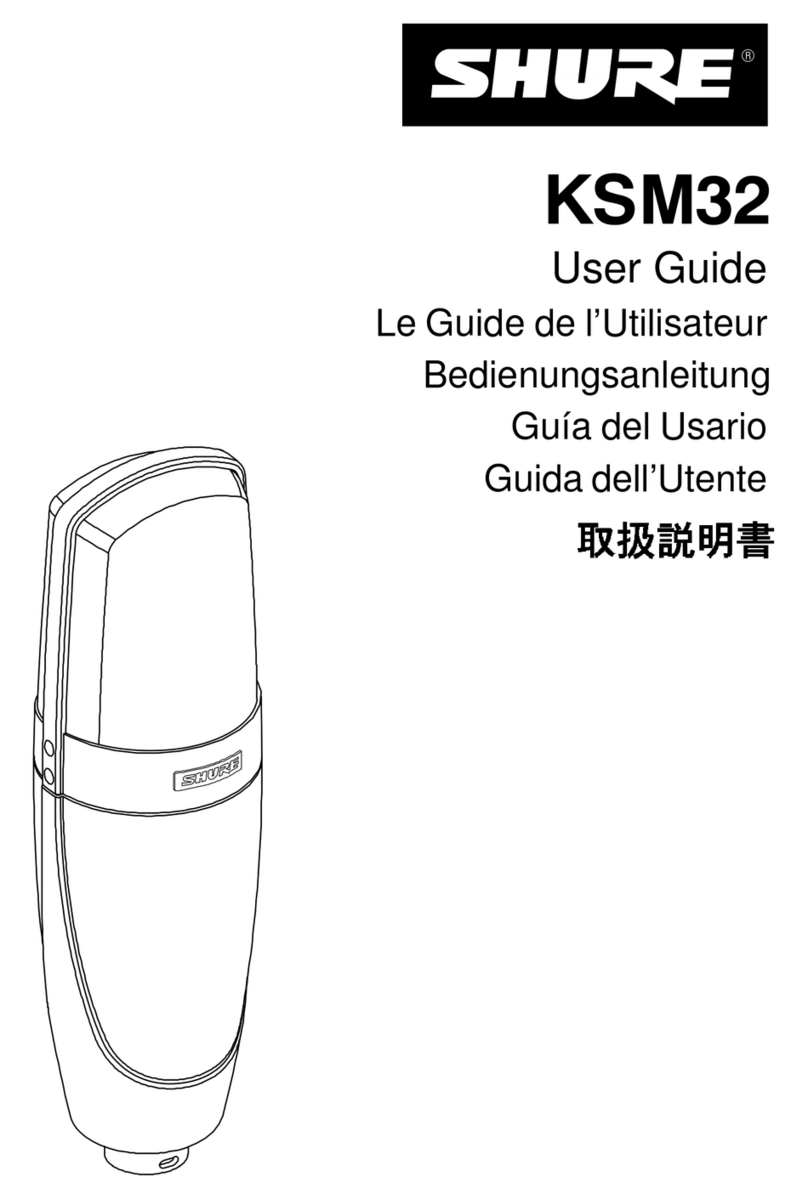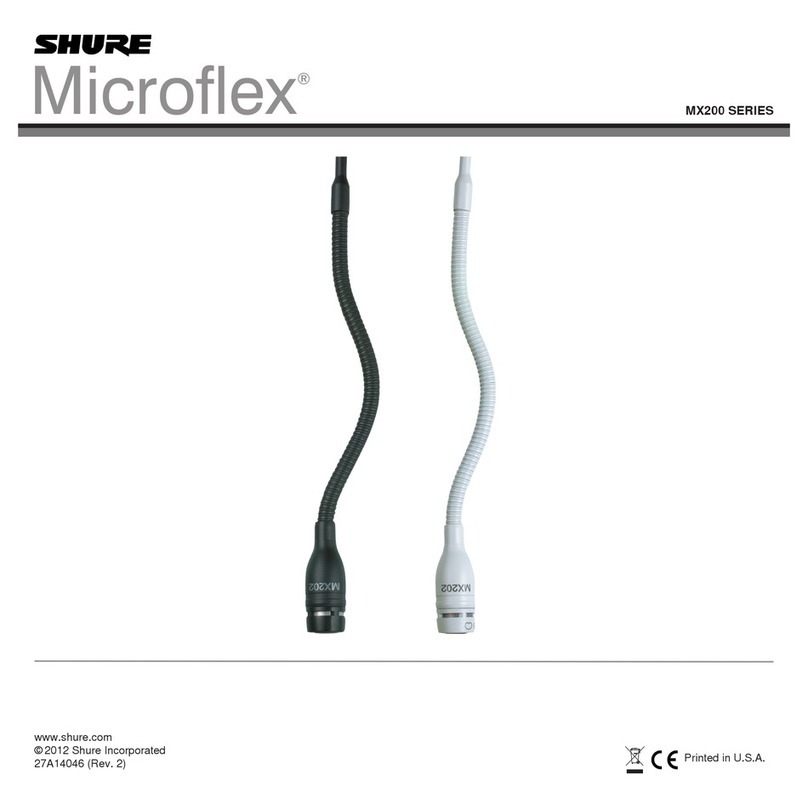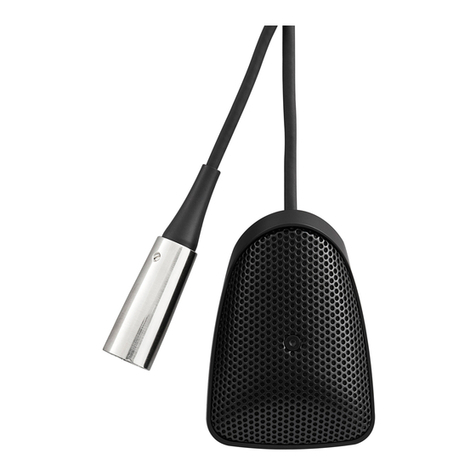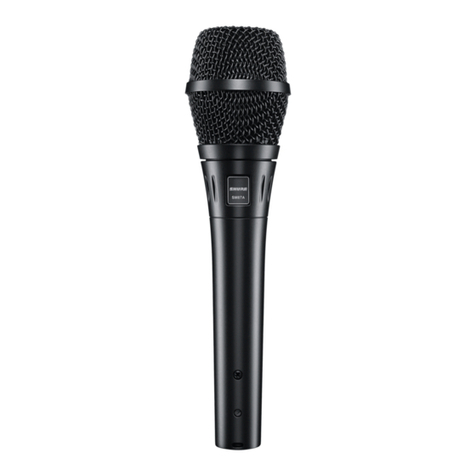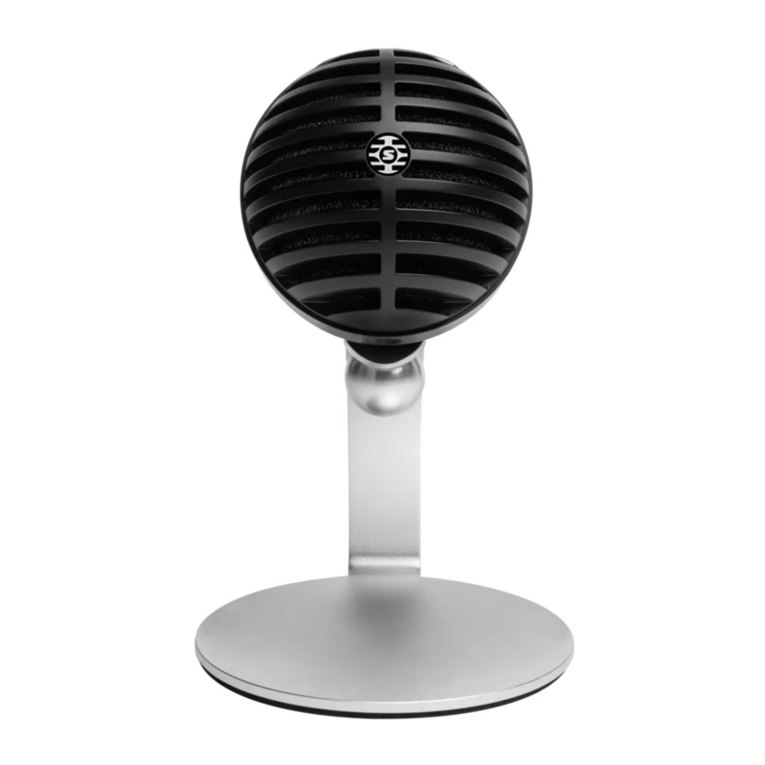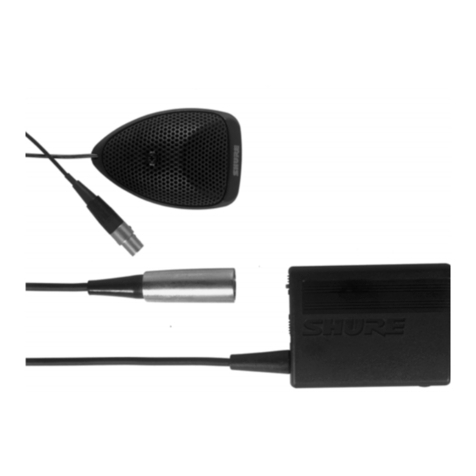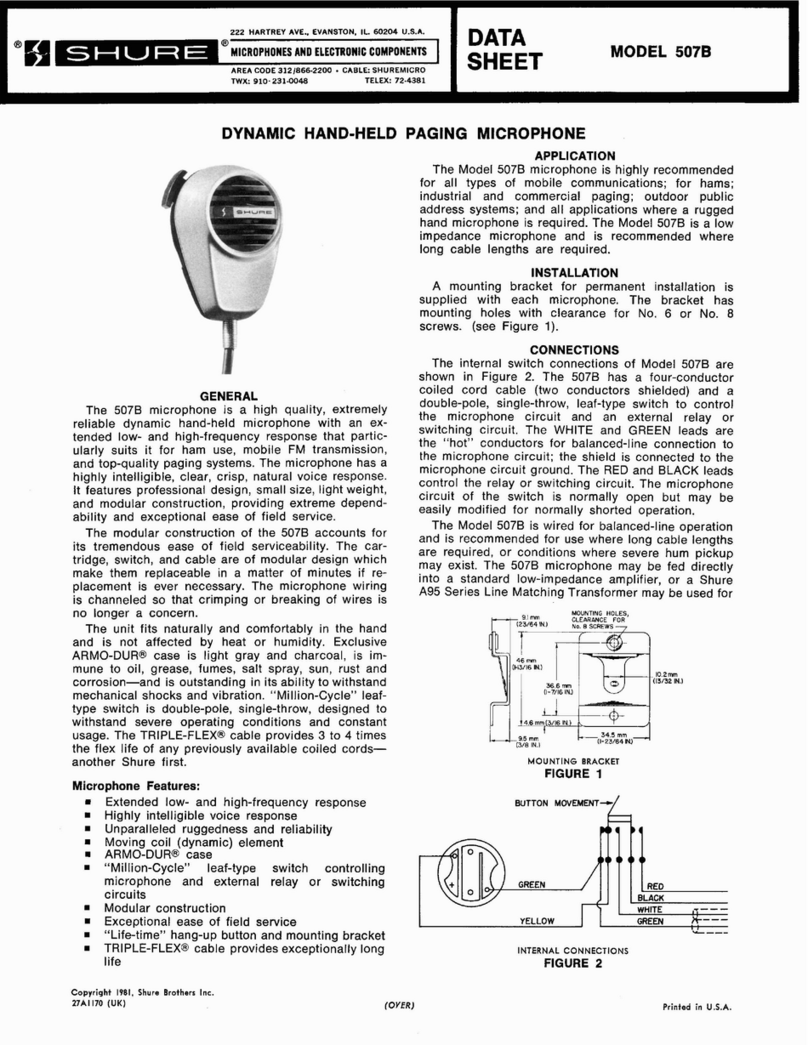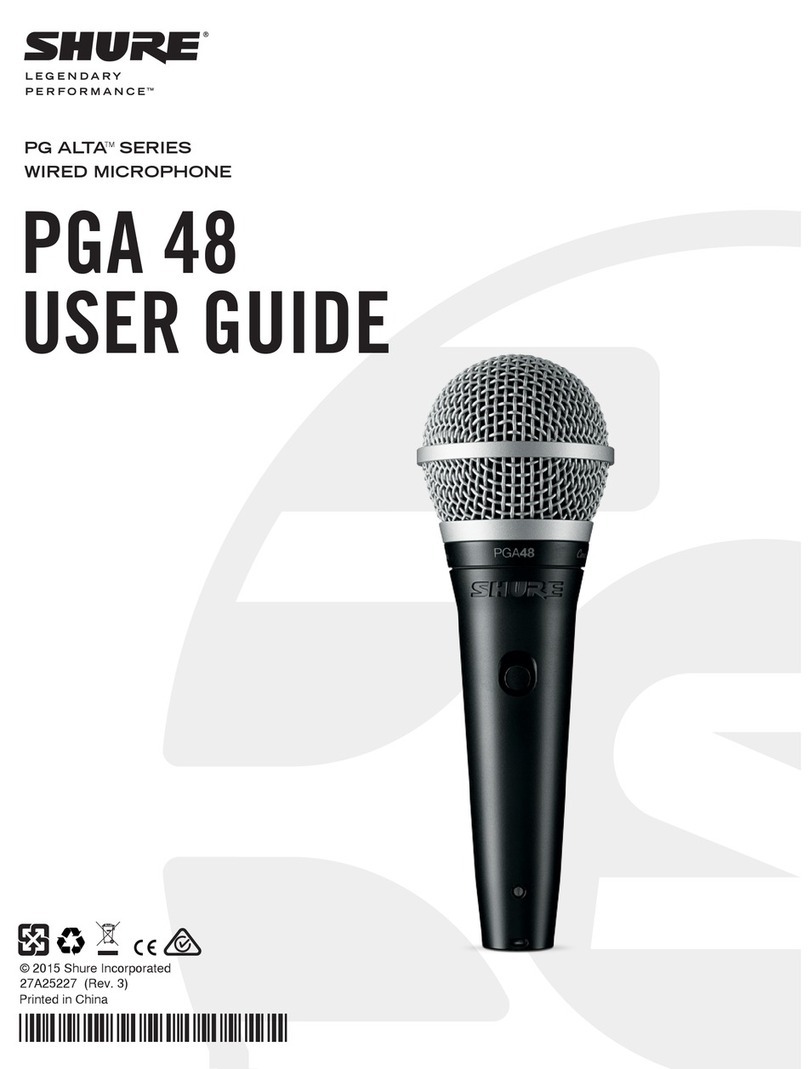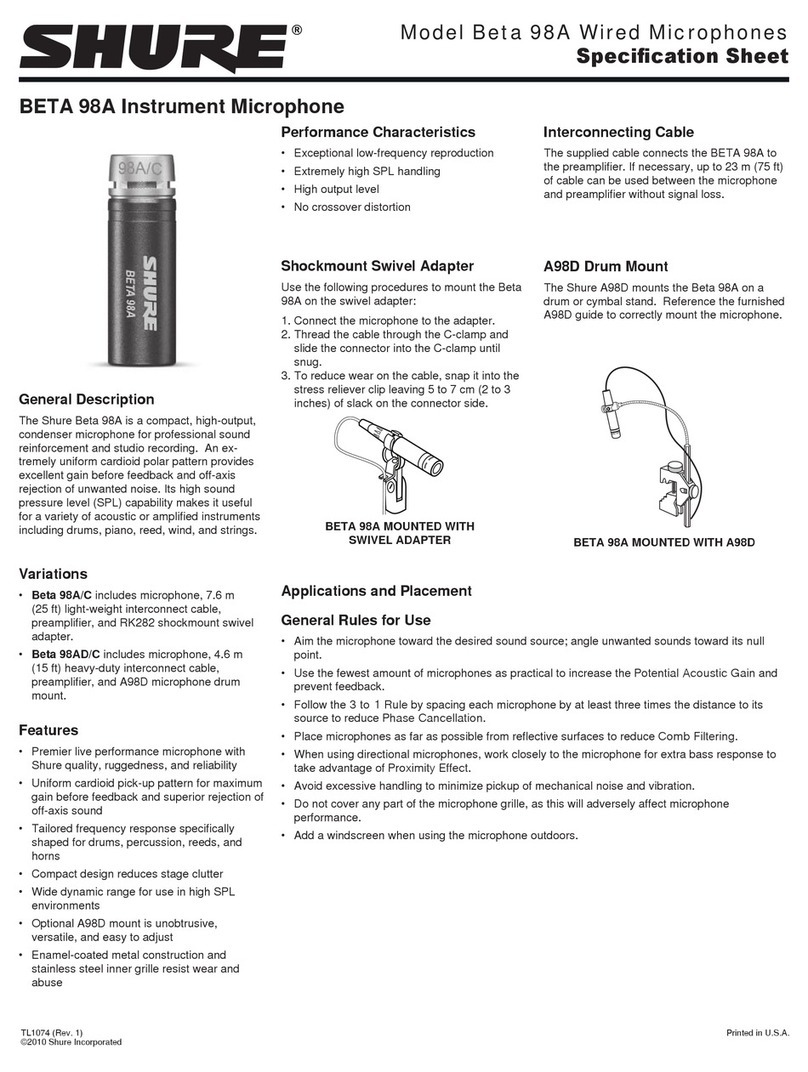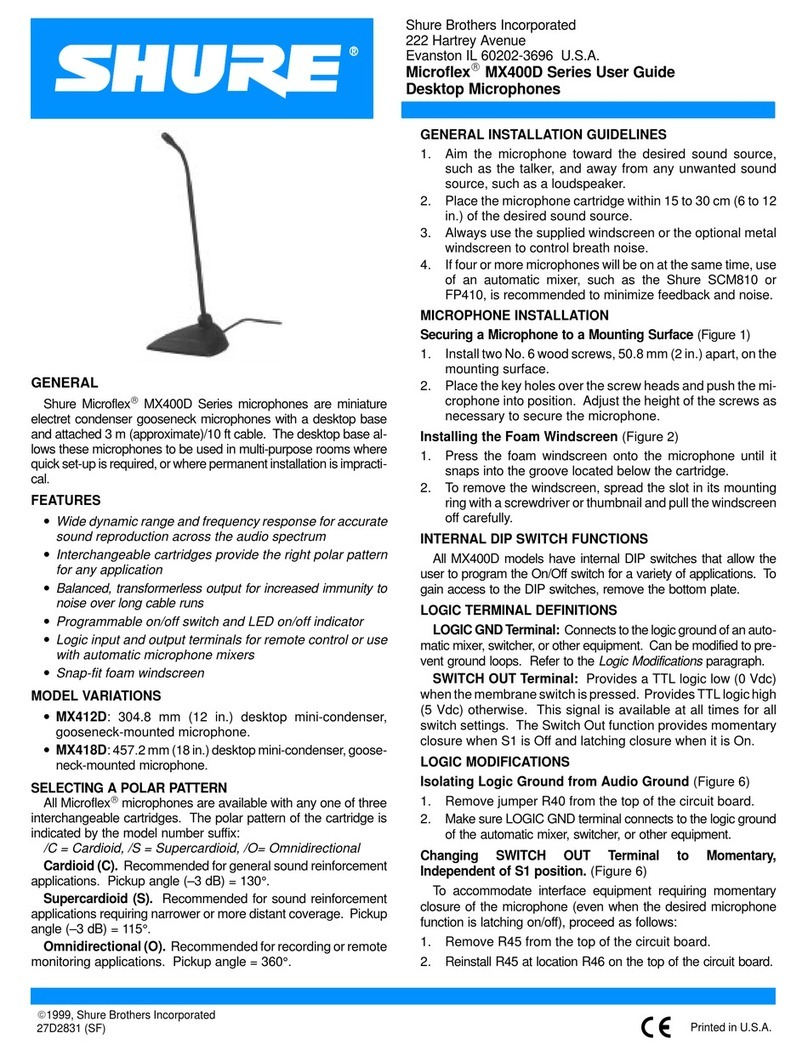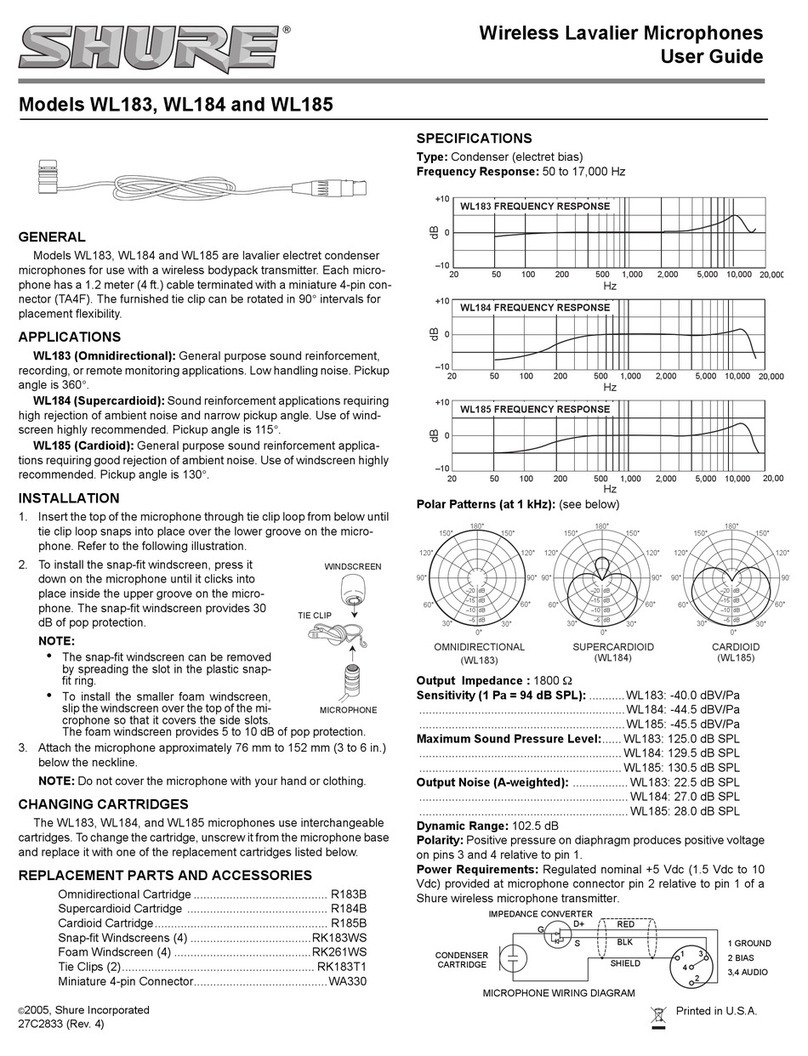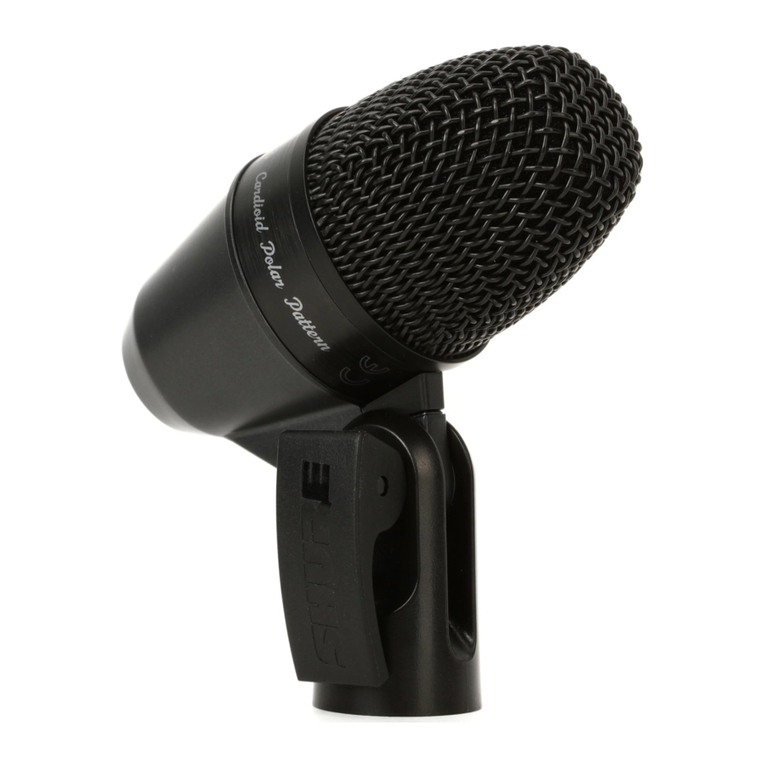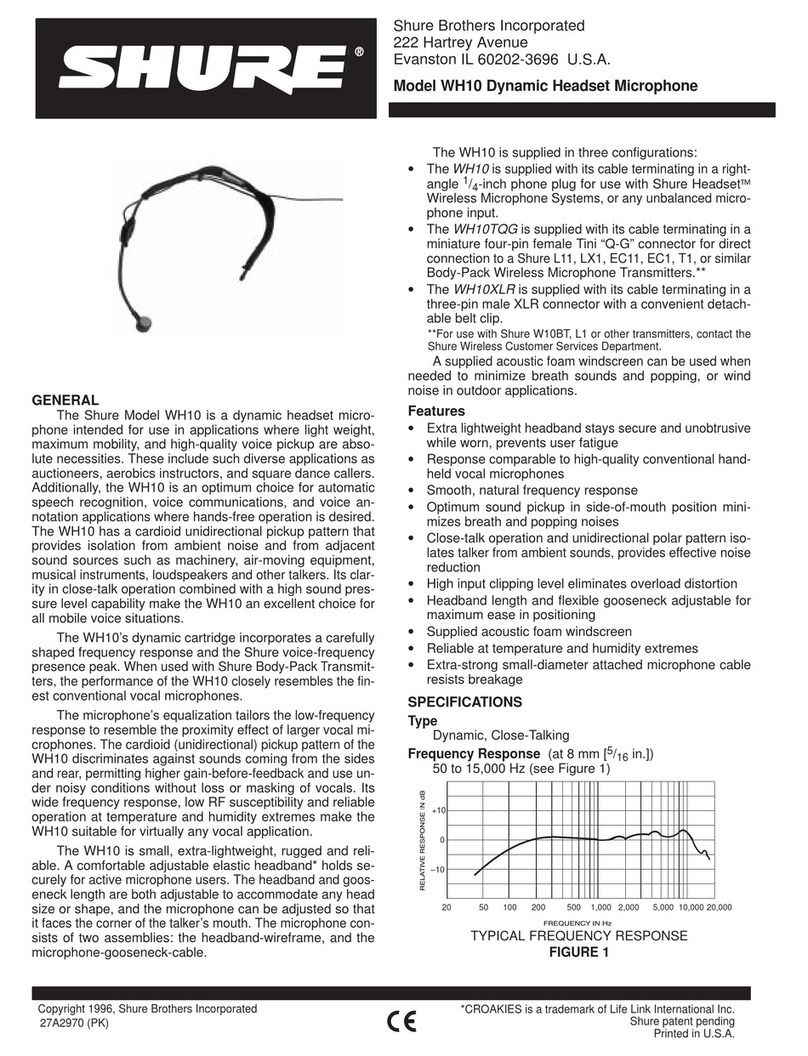
Thank you for selecting the KSM series from Shure.
Over 90 years of audio experience has contributed to making this one of the
finest microphones available.
If you have any questions not answered in this guide, please contact Shure
Applications Engineering at 847-600-8440, Monday through Friday, from
8:00 am to 4:30 pm, CST. In Europe, call 49-7262-92490. In Asia, call 852-
2893-4290. Our web address is www.shure.com.
General Description
The Shure®KSM44A is a premium, large-diaphragm, side-address condenser
microphone with multiple polar pattern options (cardioid, omnidirectional,
bidirectional). The refined and sophisticated design of the KSM44A features
externally biased, dual 1-inch diaphragms, extensive internal pop filtering
and Prethos®advanced preamplifier technology for a ground-breaking
threshold minimum of self-noise. The KSM44A is the premier choice for the
highest level of professional studio and stage performance.
Features
• Multiple polar patterns (cardioid, omnidirectional and bidirectional) for
maximum flexibility in a wide variety of recording applications
• Dual 1 inch, externally biased, ultra-thin, 2.5 μm, 24 Karat gold-layered,
low mass, Mylar® diaphragms provide superior frequency response
•Class A, discrete, transformerless preamplifier for transparency, extremely
fast transient response and no crossover distortion. Minimizes harmonic
and intermodulation distortions
• Premium electronic components and gold-plated internal and external
connectors
• Subsonic filter eliminates rumble from mechanical vibration below 17 Hz
• Switchable 15 dB pad for handling extremely high sound pressure levels
(SPLs)
• 3-position switchable low-frequency filter helps reduce unwanted back-
ground noise or counteract proximity effect
• Integrated three-stage "pop" protection grille reduces plosives and other
breath noise
• Internal shock mount reduces handling and stand noise
Performance Characteristics
• Extremely uniform polar response
• Extended frequency response
• Minimal self-noise
• Exceptional low-frequency reproduction
• Able to withstand high SPLs
• High output level
• No crossover distortion
• Superior common-mode rejection and suppression of radio frequency
interference (RFI)
Applications
The KSM44A provides superior results in any application requiring a high
quality microphone. Some typical applications are listed below.
• Vocals (studio or live)
• Acoustic instruments such as piano, guitar, drums, percussion, strings
• Brass and woodwind instruments
•Low-frequency instruments such as double bass, electric bass, kick drum
• Overhead miking for drums or percussion
• Choral or orchestral ensembles
• Room ambience or stereo miking
Acoustic environments and microphone placements strongly affect the sound
obtained from miking a source, especially with a high-resolution microphone
like the KSM44A. You may need to experiment with placement, room treat-
ments, and polar pattern to achieve the best overall sound for each applica-
tion.
Operation
1/5©2017 Shure Incorporated
KSM44A
Multi-Pattern Dual Diaphragm Microphone
